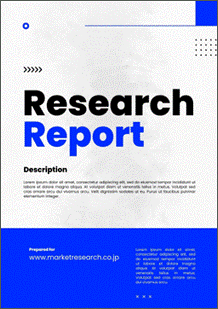 | • レポートコード:B-MOR-040205 • 出版社/出版日:Mordor Intelligence / 2018年4月 • レポート形態:英文、PDF、100ページ • 納品方法:Eメール(受注後2営業日) • 産業分類:食品・飲料 |
| Single User(1名様用) | ¥569,800 (USD3,850) | ▷ お問い合わせ |
| Team User(7名様用) | ¥592,000 (USD4,000) | ▷ お問い合わせ |
| Corporate User | ¥1,221,000 (USD8,250) | ▷ お問い合わせ |
• お支払方法:銀行振込(納品後、ご請求書送付)
レポート概要
The North America compound chocolate market is projected to register an estimated CAGR of 3.8%, during the forecast period of 2018-2023.
Low Cost of Compound Chocolate – Fueling the Market Growth
Increasing demand of low priced cocoa based products has increased the demand of compound chocolates globally. The major market drivers include, increased price of cocoa butter, limited supply of cocoa products in the market, cheaper price of compound chocolates, and increasing demand in industrial and bakery applications.
The technical advantage of non-requirement of tempering and easy manufacturing process has increased the industrial demand of compound chocolates. However, the regulation on addition of vegetable fats in chocolate by various regulatory authorities has restrained the growth of the compound chocolate market. Other than the regulation on vegetable fats, major factors restraining the market growth include, unhealthy nature of cheap vegetable fats, along with consumer preferences for the pure chocolates, among others.
Versatile Application of Compound Chocolate in Bakery & Confectionery Segment
The compound chocolates are used in industrial applications of bakery and confectionery products, as direct chocolate end consumers, and in ice creams. The increased demand of coatings & coverings for the bakery products has raised popularity of compound chocolates among bakery applications. The market is sub-segmented on the product type, as compound chocolate chips, coatings, slabs, and others. The chocolate chips are used in products, such as ice cream, biscuits, and cookies. Chocolate slabs are utilized commercially by manufactures for industrial applications, where it is melted and further processed into final product.
By flavor, the market can be segmented into dark, white, milk, and others. White chocolate has found increasing consumer preference in bakery & confectionary applications, owing to its full cream flavor characteristic.
United States to Dominate Compound Chocolate Market
The countries in the region extensively export from developing countries of Asia-Pacific region. Increased advancement in technology and the chocolate crisis in the market has provided a great opportunity to the compound chocolate market in North America. The Canadian compound chocolate market is expected to register a CAGR of 4.2%,
during the forecast period.
Key Development
• January 2017 – Barry Callebaut launched a new range of fillings for confectionery & bakery creations at ISM trade fair in Cologne. The company claims the fillings to contain 40% less calorie, compared to fat-based fillings, as they are made without any added vegetable fats or preservatives.
The major players include – CARGILL, PURATOS, CLASEN QUALITY CHOCOLATE, SANTA BARBARA CHOCOLATE, BLOMMER CHOCOLATE COMPANY, THE BARRY CALLEBAUT GROUP, AALST CHOCOLATE, SEPHRA, CHOCOLEY, UNIGRA, amongst others.
Reasons to Purchase this Report
• Analyzing outlook of the market with the recent trends and Porter’s five forces analysis
• Market dynamics which essentially consider the factors, which are impelling the present market scenario, along with growth opportunities of the market in the years to come
• Market segmentation analysis, including qualitative and quantitative research incorporating the impact of economic and non-economic aspects
• Regional and country level analysis integrating the demand and supply forces that are influencing the growth of the market
• Competitive landscape involving the market share of major players, along with the key strategies adopted for development in the past five years
• Comprehensive company profiles covering the product offerings, key financial information, recent developments, SWOT analysis, and strategies employed by the major market players
• 3-month analyst support, along with the Market Estimate sheet in excel
Customization of the Report
• This report can be customized to meet your requirements. Please connect with our analyst, who will ensure you get a report that suits your needs
レポート目次1. Introduction
1.1 Key Deliverables of the study
1.2 Study Assumptions
1.3 Market Definitions
2. Research Approach and Methodology
2.1 Introduction
2.2 Research Design
2.3 Study timelines
2.4 Study Phases
2.4.1 Secondary Research
2.4.2 Discussion Guide
2.4.3 Market Engineering & Econometric Modeling
2.4.4 Expert Validation
3. Key Findings
4. Market Dynamics
4.1 Drivers
4.2 Restraints
4.3 Opportunities
4.4 Porter’s Five Forces Analysis
4.4.1 Bargaining Power of Suppliers
4.4.2 Bargaining Power of Buyers
4.4.3 Threat of New Entrants
4.4.4 Threat of Substitute Products and Services
4.4.5 Degree of Competition
5. Market Segmentation
5.1 By Product Type
5.1.1 Chocolate Chip
5.1.2 Chocolate Slab
5.1.3 Chocolate Coatings
5.1.4 Others
5.2 By Application
5.2.1 Ice Cream & Frozen Desserts
5.2.2 Bakery
5.2.3 Compound Chocolate
5.2.4 Confectionery
5.3 By Flavor
5.3.1 Milk
5.3.2 Dark
5.3.3 White
5.3.4 Others
5.4 By Geography
5.4.1 North America
5.4.1.1 United States
5.4.1.2 Canada
5.4.1.3 Mexico
5.4.1.4 Rest of North America
6. Competitive Landscape
6.1 Strategy adopted by Key players
6.2 Most active companies in the past five years
6.3 Market Share Analysis
7. Company Profiles
7.1 Cargill
7.2 Puratos
7.3 Clasen Quality Chocolate
7.4 Santa Barbara Chocolate
7.5 Blommer Chocolate Company
7.6 The Barry Callebaut Group
7.7 Aalst Chocolate
7.8 Sephra
7.9 Chocoley
7.10 Unigra
8. Appendix
8.1 Disclaimer
8.2 Sources